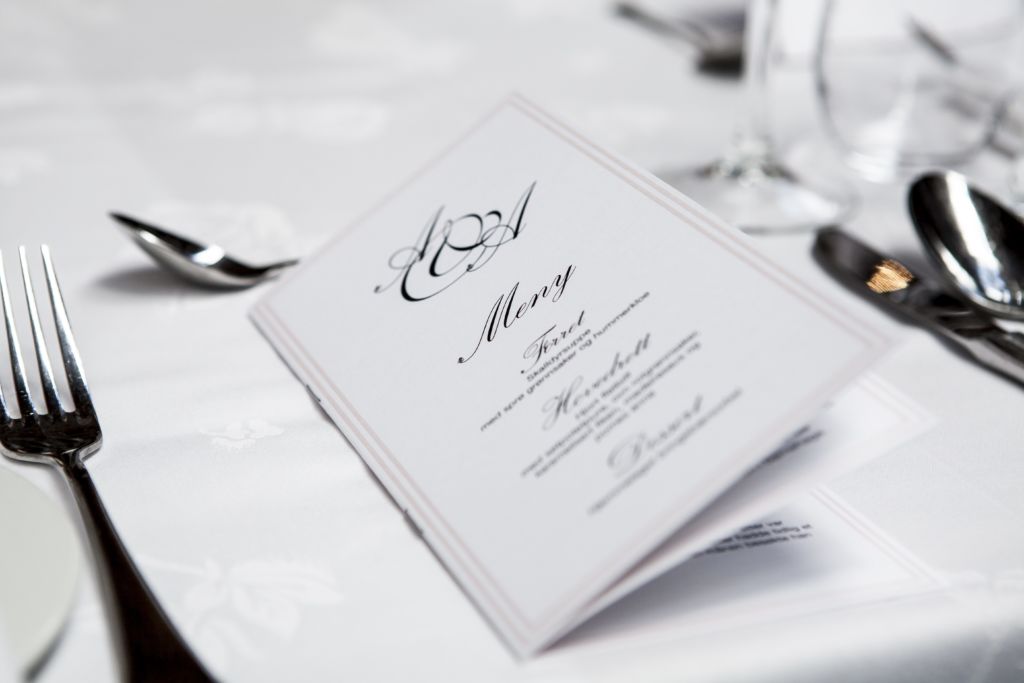When you’re tying the knot, getting your head around all the little aspects of wedding planning can be a bit overwhelming. From figuring out your budget to picking your venue, trying on dresses to buying wedding jewellery, there’s so much ‘unknown territory’ to explore.
However, for many couples, wedding stationery plays a central role in the wedding. So, it’s well worth wrapping your head around wedding stationery and what you need to account for. Here’s everything you need to know about it…
Save the Dates
Save the dates give you a chance to ask your friends and family to save the date you’re going to be married on, increasing the likelihood that your nearest and dearest can attend.
The design of the save the dates can be as simple or elaborate as you like, but the message will usually say something along the lines of “We’re getting married on 27th August 2018, please save the date! Invitation to follow”.
Wedding Invitations
Wedding invitations are the most important element of wedding stationery. Not only does an invitation formally request guests to attend your wedding, the design also reflects the tone of your wedding – whether that’s a marquee in a garden or a black tie event, for example.
Take a look online to browse for inspiration regarding what your invitation might look like. There are so many ideas out there, with lots of illustrators and graphic designers to help you to design something truly beautiful!
The most important thing to remember, however, is that the wedding invitation actually needs to contains lots of component parts. You’ll need the invitation itself, the outer envelope, an unsealed inner envelope (stamped, and pre-written with your address), and an RSVP card. You may also want to include a printed map to help your guests find your wedding venue and reception, as well as details of hotels.
RSVP Cards
Part of the wedding invitation, RSVP cards are the things that your guests fill in and post back to you, confirming whether or not they will be able to attend. Again, like the save the dates and invitations, you can personalise these as much as you like to reflect your wedding day and your personality as a couple.
At the least, however, just make sure you give recipients the option to outline exactly who is attending, whether or not they are bringing a ‘plus one’, and whether or not they will be attending the wedding ceremony, the reception or both.
Some RVSPs will ask guests to add details about their dietary requirements, and some RSVPs will be accompanied by a menu so that you can ask guests to choose what they’d like to eat.
You can add an extra twist to your RVSPs and make it a little more fun by leaving a blank space for guests to suggest a song they’d like to dance to on the day, for instance. This is a good idea as it starts to get guests excited for your wedding, and also ensures the dance floor will be filled all night long!
Wedding Programmes
Another piece of stationery to factor in is the wedding programme. These are pieces of paper or booklets that will be left on seats at the ceremony, outlining the plan for the day. It enables guests to know what’s coming up next, such as readings and songs.
Again, a wedding programme is often stylised like an invitation, but it’s up to you how much design work you want to do. Some couples have their initials printed on the front of the programme, some print a passage of their favourite piece of poetry, and other couples skip wedding programmes altogether.
Menus
If you would like to display a menu on each table at your wedding, it’s another piece of ‘stationery’ you need to account for. It’s nice for guests to sit down to a meal and know what they’re about to be served, and it’s even more helpful if you can list each of the allergens in every dish so that guests who forgot to add their dietary requirements know which dishes they can enjoy. Leaving the drinks menu at the bar if you’re serving cocktails is another nice touch, too.
Place Settings
If you’d like your guests to sit in a particular arrangement, it’s a good idea to put a place card in their seat with the name in it. Again, there are lots of fun ideas for jazzing up place settings so that they make a design statement on the table. This design is simple but effective.
Thank You Notes
Last, but certainly not least, thank you notes are an important piece of wedding stationery to invest in. Send thank you cards no later than a month after your wedding to thank your guests for attending and/or for the gifts they gave you. It might seem like a small favour, especially if you’ve already thanked your guests in person or over the phone, but everyone likes to receive mail that isn’t just another bill!


